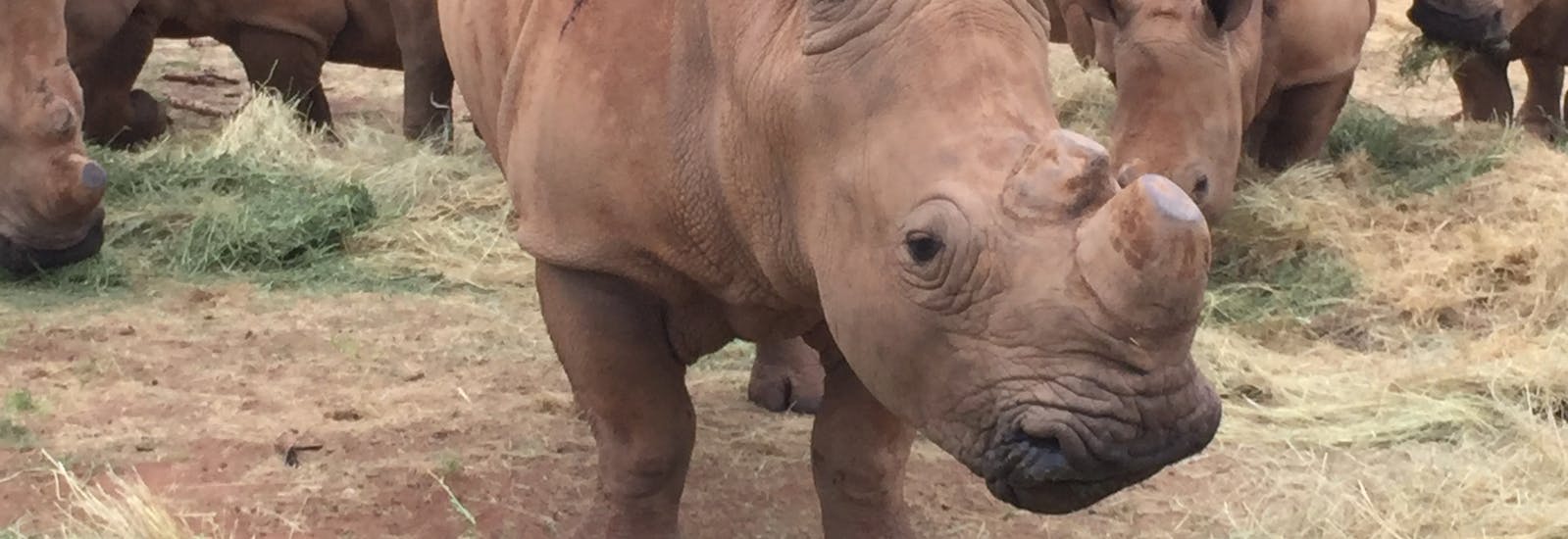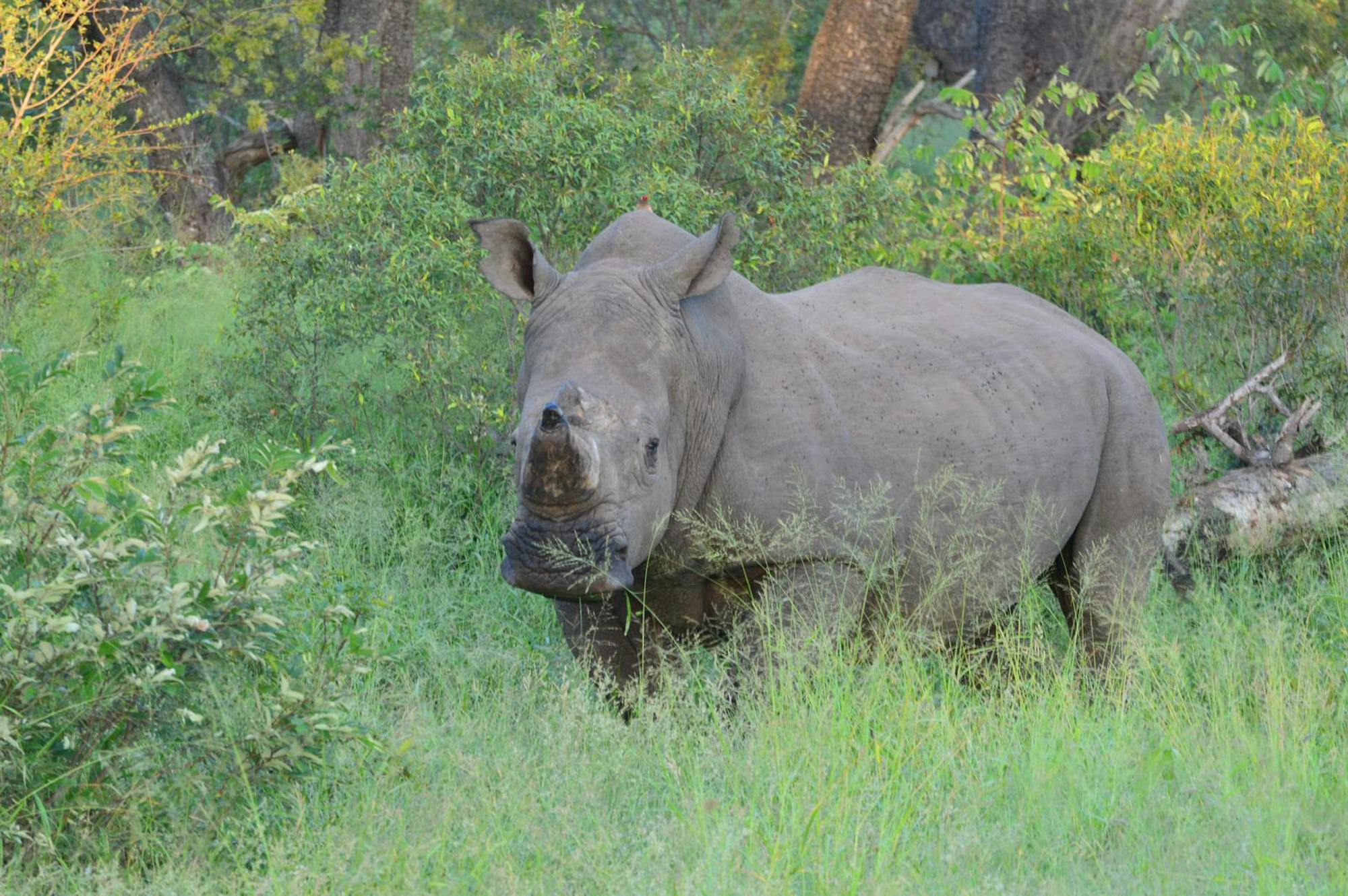
Rhino fact file
Arguably, the entire rhino poaching crisis is based on a lack of education and information, as misinformation about the medicinal use of rhino horn has created the demand. Therefore, we believe that the more well-informed people are about rhinos as a species, the better! For this purpose, we have created the Rhino Fact File below. We hope you will enjoy this and share knowledge about these fantastic animals with other people. Let's all become rhino ambassadors!
Rhino fact file
Since the beginning of the 20th Century, the number of wild rhinos has plummeted by 94%. There are currently five rhino species, including the white and black rhinos, which are native to Africa and make up 80% of the global population, as well as the Sumatran, Javan, and greater one-horned rhinos found in Asia.
Whilst these rhinos vary in appearance, behaviour, and geographical range, they all have one thing in common – they are all at risk of extinction. This sad possibility has been made a reality through the threats that the rhinos face daily, the most significant of which is illegal poaching.

White rhino (Ceratotherium simum)
The white rhino is the least endangered of the two African species, with 20,405 viable individuals remaining in the wild. They are square-lipped, and their strong neck muscles allow them to spend many hours grazing in their grass savannah habitats. White rhinos are much larger than their fellow African black rhinos and are the largest land mammal after the elephant.
Sub-species
- Northern white rhino (Ceratotherium simum cotton): The Northern white rhino (NWR) has sadly been declared 'Extinct in the Wild', as there is only one confirmed remaining population, which consists of 3 non-viable individuals. These elderly rhinos were translocated to a Kenyan Reserve from captivity in the Czech Republic and have all since been found to have low fertility or to be completely infertile. Therefore, there is no chance of the population's size increasing without cross-breeding with SWR. This would preserve the genes of the NWR but would be unlikely to evolve into a pure, viable population due to inevitable inbreeding complications. The sub-species once inhabited at least 5 African countries, and more than 2000 individuals remained as recently as 1960, which shows just how drastic poaching and other threats have had upon population numbers.
- Southern white rhino (Ceratotherium simum simum): The outlook for the Southern white rhino (SWR) is much brighter, as there are currently an estimated 20,000 individuals distributed across several countries, including South Africa, Namibia, Botswana, Swaziland, Zimbabwe and Kenya.
Many of the larger populations are located in Kruger National Park in South Africa. Despite the reasonable population size and geographic range, SWR almost became extinct in the 19th Century, with only 100 individuals remaining. Still, through continued protection and conservation efforts, the numbers began to increase to where they are today. SWR is still listed as 'Near Threatened', as the threat of poaching means that the situation could easily change. This threat is substantiated by the fact that most of the rhinos killed by poachers in recent years have been Southern white rhinos.
Black rhino (Diceros bicornis)
Black rhinos are much smaller than white rhinos and have a more pointed upper lip, which is prehensile. This allows them to browse for food, unlike the SWR, which is a pure grazer.
Black rhinos used to be extremely common, but their population has decreased by 97.6% due to poaching, with numbers falling as low as 2,410 in 1995. Since then, successful conservation efforts have seen numbers increase to approximately 5,000 individuals. They are found in patchy distribution from Kenya down to South Africa. However, almost 98% of the total population is found in just four countries: South Africa, Zimbabwe, Namibia and Kenya.

Sub-species
- South-Western black rhino (Diceros bicornis bicornis): The number of South-Western black rhinos in the wild has risen over the past three generations and reached 1,957 individuals. The main stronghold is in Namibia, but there are also populations within South Africa, and there has been one sighting in Angola. This sub-species is currently listed as 'vulnerable' but may be reclassified as 'Near Threatened' if the population increase continues for at least five years.
- Western black rhino (Diceros bicornis longipes): The Western black rhino was declared extinct in 2011 after an extensive survey in 2006 failed to find evidence of any remaining individuals in their last known location in Cameroon. There have been no sightings since this survey, leading to the conclusion that the sub-species are extinct.
- Eastern black rhino (Diceros bicornis michaeli): This rhino sub-species was once found in several African countries, but its main stronghold is now Kenya. Only 799 Eastern black rhinos remain in the wild and are listed as 'Critically Endangered'. Since 1997, efforts have been underway to translocate some rhinos to their historical range in Tanzania. Most recently, five rhinos were moved to the Serengeti National Park, Tanzania, in 2010.
- South-Central black rhino (Diceros bicornis minor): The South-Central black rhino has the largest population of all black rhino sub-species, with 2,299 individuals. However, they are still listed as 'Critically Endangered' as their numbers have plummeted by 80% over the last three generations, meaning that the future of the sub-species is uncertain. The rhino is found mainly in South Africa, Zimbabwe and Tanzania but has also been reintroduced to Swaziland, Botswana, Zambia and Malawi.
Main Threats to Rhinos
- Poaching: Rhinos are regularly killed by poachers so that their horns can be taken and sold for profit on the black market. Around three rhinos are killed by poachers each day, and that's just in South Africa! The number of rhinos poached annually has been increasing dramatically since 2007, by a massive 9000%, but recent statistics show that this number has fallen since 2015.
Whilst this may seem like fantastic news and suggest the success of anti-poaching efforts, there are arguably fewer rhinos left to be poached. Growing demand for rhino horn in traditional Asian medicine and increased black market horn prices mean that poaching is likely to be on the rise again in 2016 and remains the biggest threat to African rhinos. - Habitat loss and fragmentation: Some of the ecosystems in which rhinos live are being disturbed and destroyed by the activities of humans, especially in Asia, which prevents individuals' survival. The impact of habitat loss is worsened when activities such as illegal logging, road construction and human settlement cause populations to become fragmented, leading to inbreeding and an inability to fight disease.
- Lack of political support: Government support plays a paramount role in preventing poaching and habitat destruction, but currently, there is not enough being done to protect the rhinos. There are not enough laws to do so, and the rules lack enforcement. Consumer countries also need to realise the catastrophic effect their demand for rhino horns has on the global population and stop the trade.
What can be done?
Strict laws minimising the poaching of rhinos need to be implemented and enforced in all countries that are inhabited by the species. However, this alone will not resolve the issue. As long as there is a demand for rhino horn, poachers will continue to find a means to obtain it. Therefore, the order must be decreased; education is the only way to do this. As this is unlikely to be achieved before all rhinos become extinct, other options include dying or poisoning the horns, making them undesirable, and dehorning the rhinos themselves to prevent an attack. Legalising the rhino horn trade has also been discussed, as it could reduce its demand.
Whilst rhinos require protection on a vast scale, you can contribute to the overall conservation effort by spreading awareness of the crisis they face and helping to educate others!
The following websites have been used for reference:

